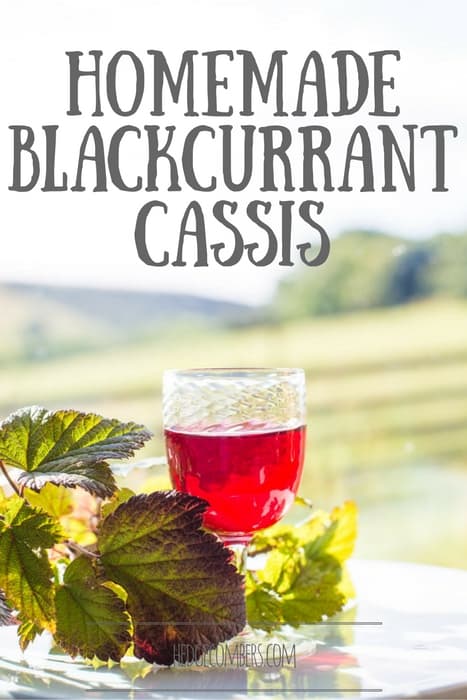Understanding Cassis Blackcurrant Production

Table of Contents
Cultivating the Blackcurrant
The foundation of exceptional Cassis lies in the quality of its blackcurrants. Careful selection and cultivation are paramount to ensuring the desired aroma, flavour, and color in the final product.
Choosing the Right Variety
Selecting the appropriate blackcurrant variety is crucial. Certain varieties possess superior characteristics that lend themselves to Cassis production, offering a richer flavour profile and higher antioxidant levels.
- Noir de Bourgogne: Known for its intense aroma and deep colour.
- Ben Lomond: A high-yielding variety with good flavour and suitable acidity.
- Titania: Characterized by its large berries and excellent juice yield.
The choice of variety significantly impacts the final taste of the Cassis. Varieties with high antioxidant levels contribute to a more complex and nuanced flavour, while the right acidity is essential for balance.
Optimal Growing Conditions
Blackcurrant bushes thrive under specific conditions. Providing optimal care throughout their life cycle ensures a bountiful harvest of high-quality berries.
- Sunlight: Blackcurrants require at least 6 hours of direct sunlight daily.
- Soil: Well-drained, slightly acidic soil (pH 6.0-6.5) is ideal.
- Irrigation: Consistent moisture is needed, especially during dry periods.
Pest and disease management is also crucial. Organic methods, such as companion planting and biological controls, are increasingly preferred, minimizing environmental impact. Conventional methods might involve pesticides, but careful application is essential to preserve the integrity of the fruit.
Harvesting Techniques
The timing and method of harvesting significantly impact the quality of the blackcurrants. Careful harvesting ensures the berries reach optimal ripeness without damage.
- Ripeness: Blackcurrants should be fully ripe, exhibiting a deep, dark color and a slightly soft texture.
- Harvesting Method: Hand-picking is generally preferred to minimize damage to the delicate berries. Mechanical harvesting can be used, but careful handling is essential to prevent bruising.
- Post-Harvest Handling: Prompt processing after harvesting is crucial to prevent deterioration and maintain quality.
The gentler hand-picking method often yields superior flavour and aroma compared to mechanized harvesting, although the latter can be more efficient for large-scale production.
Cassis Production Process
Once harvested, the blackcurrants undergo a series of meticulous steps to transform them into the exquisite Cassis liqueur.
Crushing and Maceration
The first step involves gently crushing the blackcurrants to release their juice. Maceration, a crucial process, follows, allowing the juice to steep and extract the full spectrum of flavors and aromas from the skins and seeds.
- Crushing: Gentle crushing avoids excessive seed breakage, which can lead to bitterness.
- Juice Extraction: The juice is then extracted, often using a press to ensure maximum yield.
- Maceration Time: The maceration period varies depending on the desired flavour profile, typically lasting several hours or even days.
Traditional methods often involve using wooden presses and large fermentation tanks, whereas modern techniques may incorporate more efficient machinery.
Fermentation and Distillation
The extracted juice undergoes fermentation, converting sugars into alcohol. Subsequent distillation increases the alcohol concentration and refines the flavour.
- Yeast Strains: Specific yeast strains are selected to enhance the desired flavor profile.
- Fermentation Temperature: Controlled fermentation temperature is crucial for optimal flavour development.
- Distillation Methods: Pot still distillation, yielding smaller batches with a more nuanced flavour, is often favored over column still distillation, which is more efficient for mass production.
The choice of distillation method and fermentation parameters significantly influence the Cassis's character – its smoothness, body, and aroma complexity.
Ageing and Blending
The distilled Cassis base may be aged to further enhance its complexity and smoothness. Different batches are then blended to achieve the desired taste profile.
- Oak Aging: While not always employed, oak aging can add subtle vanilla and spice notes.
- Blending Criteria: Blending involves combining batches with varying characteristics to balance acidity, sweetness, and aroma intensity.
The aging process contributes significantly to the final product's quality and depth of flavour, smoothing out harshness and adding complexity.
Bottling and Packaging
The final steps involve filtration, bottling, and packaging. Careful handling preserves the Cassis's quality and visual appeal.
- Filtration: Gentle filtration removes any sediment, ensuring a clear and bright product.
- Bottles: Typically dark glass bottles protect the Cassis from light degradation.
- Packaging: Attractive labels and packaging are important for enhancing the product's market appeal.
Protecting the Cassis from oxidation and light exposure is critical for maintaining its quality and preserving its exquisite flavour over time.
Conclusion
Cassis blackcurrant production is a testament to the art of crafting exceptional liqueurs. From careful cultivation and selective harvesting to meticulous processing, each stage plays a critical role in shaping the distinctive flavour and high quality of the final product. Understanding this detailed journey allows for a deeper appreciation of the expertise and dedication poured into each bottle. To further explore the fascinating world of Cassis and its production, we encourage you to research different producers, their methods, and the specific blackcurrant varieties they utilize. Delve deeper into the intricacies of Cassis blackcurrant production and discover the secrets behind this beloved liqueur!

Featured Posts
-
 Impact Of Abc News Layoffs On Popular Shows Future
May 21, 2025
Impact Of Abc News Layoffs On Popular Shows Future
May 21, 2025 -
 Loto Du Patrimoine 2025 Visite Virtuelle Du Theatre Tivoli A Clisson
May 21, 2025
Loto Du Patrimoine 2025 Visite Virtuelle Du Theatre Tivoli A Clisson
May 21, 2025 -
 5 Podcasts De Terror Misterio Y Suspenso Recomendaciones Para Escuchar Ahora
May 21, 2025
5 Podcasts De Terror Misterio Y Suspenso Recomendaciones Para Escuchar Ahora
May 21, 2025 -
 New Jersey Transit Strike Averted Tentative Deal With Engineers Union
May 21, 2025
New Jersey Transit Strike Averted Tentative Deal With Engineers Union
May 21, 2025 -
 New Dexter Resurrection Adds To The Villain Roster
May 21, 2025
New Dexter Resurrection Adds To The Villain Roster
May 21, 2025
